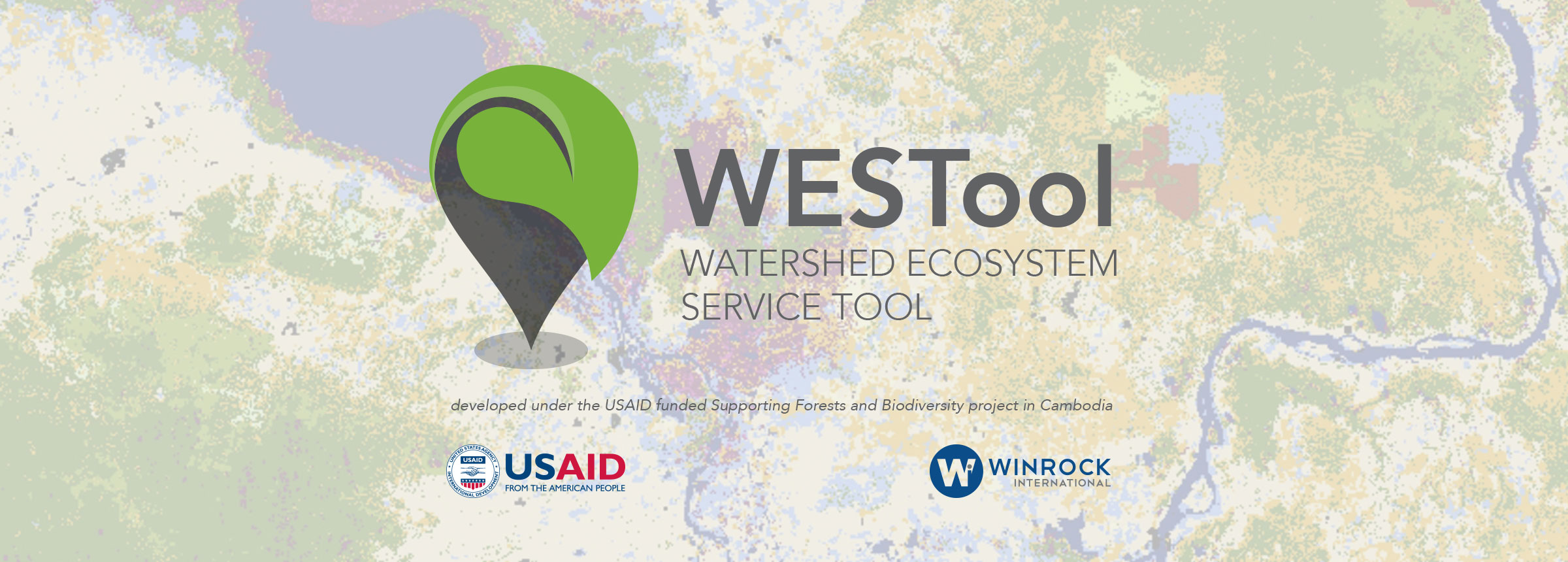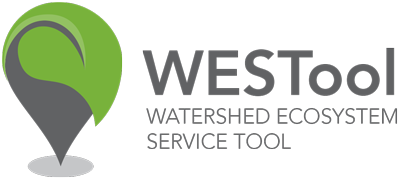
Term Definitions
| TERM | DEFINITION |
|---|---|
| Land cover | Land cover is categorized into the following classes in WESTool: forest, cropland, plantation, wetland, water, and urban/developed. |
| Deforestation | A unit of land that was converted from forest to another land use, like cropland or plantation. |
| Carbon stocks | The amount of carbon that is stored in vegetation and measured in tons per hectare. |
| Avoided carbon emissions | The amount of carbon dioxide that is NOT released to the atmosphere (i.e. it is “avoided”) as a result of NOT converting forest to another land use. If forest lands were converted, this amount of carbon dioxide would be emitted to the atmosphere. Measured in tons per year. |
| Sediment loss | The amount of sediment that is lost (to a river or to floods) because of erosion. Measured in tons per year. |
| Sediment erosion prevention | The amount of sediment that is NOT lost to the river (i.e. it is “avoided”) as a result of NOT converting forest to another land use. If the forest land were converted, this amount of sediment would be lost. Measured in tons per year. |
| Nutrient/Nitrate loss | In the WESTool, nutrients and nitrate (NO3) are the same. The amount of nutrients that are lost as a result of erosion. Measured in tons per year. |
| Nutrient erosion prevention | In the WESTool, nutrients and nitrate (NO3) are the same. The amount of nutrients that are NOT lost (i.e. it is “avoided”) as a result of NOT converting forest to another land use. If the forest land were converted, this amount of nutrients would be lost. Measured in tons per year. |
| Groundwater recharge (aquifer recharge) | The amount of rain water that enters the ground and recharges the groundwater (aquifer) stores. Some rain water does not go into the groundwater but instead either: 1) evapotranspirates back to the atmosphere, or 2) runs off into the river. Measured in hectare meters per year. A cubic hectare meter is a unit of volume equal to 1 hectare x 1 meter deep. |
| Water stress | A measure of stress to vegetation due to lack of water. When soil moisture is too low, plants begin to have water stress. Over time, water stress affects plant productivity and ability to live. This impacts crop yields. Measured in average number of water stress days per year. |
| Crop yield | The amount of yield for a crop. Measured in tons per hectare per year. |
| Biodiversity | A measure of the species diversity (all living things) for a certain ecosystem or given area. |
| Fire frequency | The number of fires that burn the land and are detected by NASA’s fire satellite. These can be either man-made or natural fires. |
| Flood risk | Area that is at risk of flooding or inundation in the future. Measured in hectares per year. |
| Percent change in rainfall/temperature | The change in rainfall that is predicted to occur compared to current rainfall. |
| Predicted percent change in crop yield | The change in crop yield that is predicted to occur compared to current crop yields. This is impacted by changes in rainfall and temperature. |
| Predicted percent change in days of water stress | The change in the number of water stress days each year that is predicted to occur, compared to current water stress days. This is impacted by changes in rainfall and temperature. |
| Overall vulnerability to climate change | A score for risk to climate change that factors both the number of individual risks (drought, flood, fire), and the severity of those risks. |
| Per hectare yield | The average yield of rice crop per hectare within that area. |
| Total cultivation area | The total area under cultivation within that area. |
How to Cite WESTool
Watershed Ecosystem Service Tool (WESTool). 2017. Beta Version 1. https://winrock.org/westool/. Winrock International







